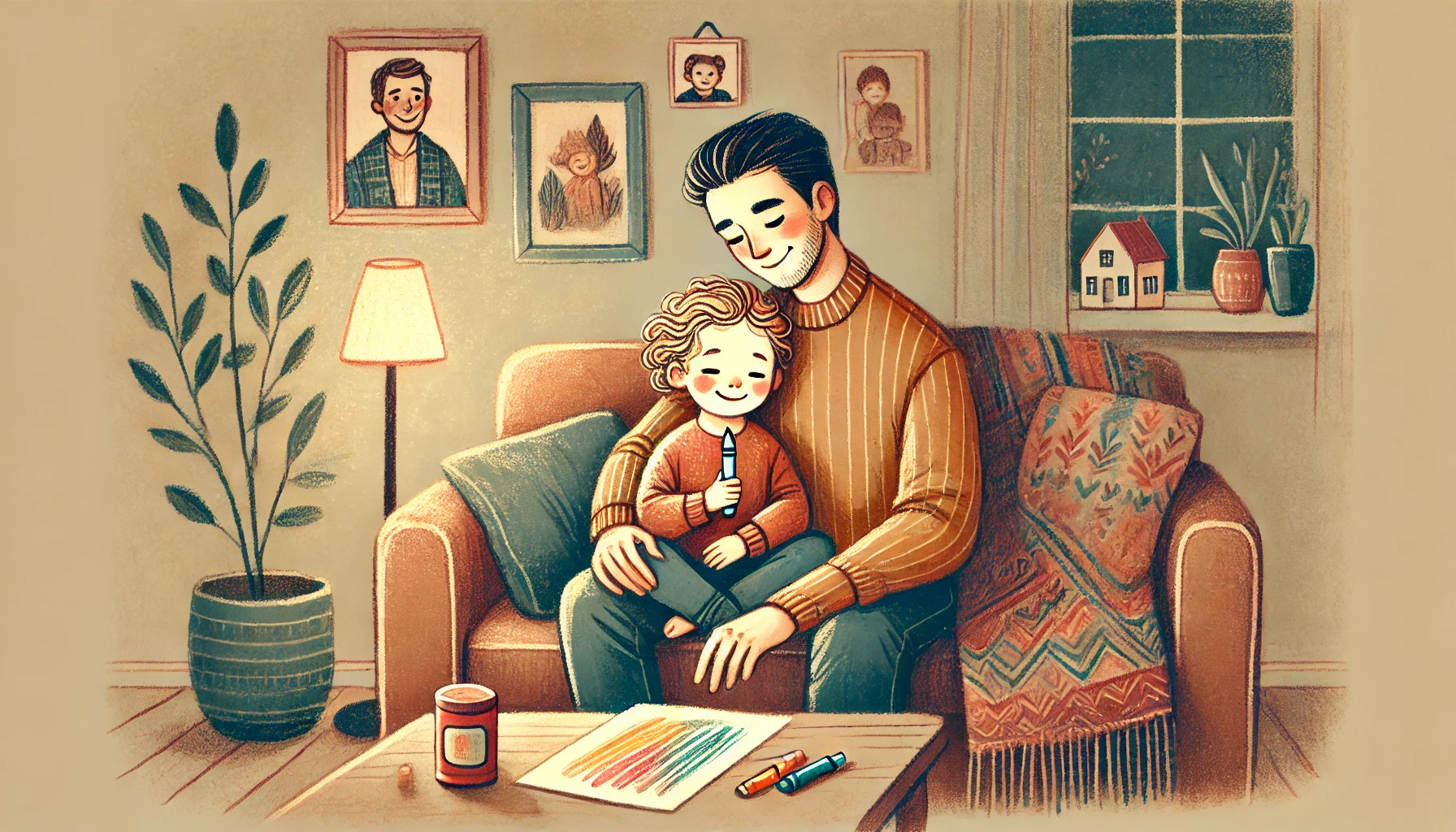Anxiety is one of the most common mental health disorders globally, affecting millions of individuals across all age groups. The prevalence of anxiety has prompted mental health counselors to develop and implement various evidence-based strategies for managing this condition. Anxiety manifests in numerous forms, including generalized anxiety disorder (GAD), social anxiety disorder, panic disorder, and specific phobias. The purpose of this article is to explore effective anxiety management techniques from a mental health counseling perspective, including cognitive-behavioral therapy (CBT), mindfulness-based approaches, acceptance and commitment therapy (ACT), exposure therapy, and lifestyle changes. These techniques are tailored to the needs of individuals suffering from anxiety and aim to empower them to manage their symptoms, improve their quality of life, and foster emotional well-being.
Introduction
Anxiety is a natural, adaptive response to perceived threats or stressors designed to protect individuals by triggering the “fight-or-flight” response. However, when anxiety becomes excessive, persistent, and disproportionate to the actual threat, it can interfere with daily functioning and lead to a variety of mental and physical health problems. According to the World Health Organization (2021), anxiety disorders are the most prevalent mental health conditions worldwide, affecting nearly 264 million people.
Mental health counselors play a critical role in helping individuals understand, manage, and overcome anxiety. By using evidence-based anxiety management techniques, counselors can assist clients in developing the skills needed to cope with anxiety in both the short and long term. This article examines some of the most effective anxiety management techniques, including cognitive-behavioral therapy (CBT), mindfulness, acceptance and commitment therapy (ACT), exposure therapy, and lifestyle modifications.
Understanding Anxiety Disorders
Before delving into anxiety management techniques, it is important to understand the different types of anxiety disorders that mental health counselors encounter. Each type presents unique challenges and requires specialized approaches.
- Generalized Anxiety Disorder (GAD): GAD is characterized by excessive worry about various aspects of life, such as work, relationships, health, or finances. Individuals with GAD find it difficult to control their worry and may experience physical symptoms such as restlessness, fatigue, muscle tension, and difficulty concentrating (American Psychiatric Association, 2013).
- Panic Disorder: Panic disorder involves sudden and repeated episodes of intense fear or discomfort, often accompanied by physical symptoms such as rapid heart rate, sweating, trembling, and shortness of breath. These panic attacks can occur unexpectedly and lead to a fear of future attacks (Kessler et al., 2005).
- Social Anxiety Disorder (SAD): Social anxiety disorder is characterized by a fear of being judged, embarrassed, or humiliated in social situations. Individuals with SAD may avoid social interactions or endure them with extreme anxiety (Stein & Stein, 2008).
- Specific Phobias: Phobias involve intense fear of specific objects or situations, such as flying, heights, or spiders. These fears are often irrational and lead to avoidance behaviors that disrupt daily life (LeBeau et al., 2010).
- Obsessive-Compulsive Disorder (OCD): OCD is characterized by intrusive thoughts (obsessions) that cause anxiety and compulsive behaviors (rituals) aimed at reducing that anxiety. For example, individuals may repeatedly wash their hands or check if the door is locked (Abramowitz & Jacoby, 2015).
Each of these anxiety disorders requires tailored interventions to help individuals manage their symptoms effectively. While the underlying mechanisms of anxiety are similar—primarily related to heightened arousal and fear—each disorder presents unique therapeutic challenges.
Cognitive-Behavioral Therapy (CBT) for Anxiety Management
Cognitive-behavioral therapy (CBT) is one of the most widely researched and effective treatments for anxiety disorders (Hofmann et al., 2012). CBT focuses on the relationship between thoughts, emotions, and behaviors, helping individuals identify and challenge distorted thinking patterns that contribute to anxiety. By changing negative thought patterns, individuals can reduce anxiety symptoms and develop healthier coping mechanisms.
Cognitive Restructuring
A central component of CBT is cognitive restructuring, which involves identifying and challenging irrational or unhelpful thoughts, also known as cognitive distortions (Beck, 2011). Common cognitive distortions in anxiety include:
- Catastrophizing: Expecting the worst possible outcome.
- All-or-nothing thinking: Viewing situations in black-and-white terms without considering shades of gray.
- Overgeneralization: Assuming that a single negative event will happen repeatedly.
- Mind reading: Believing that others are thinking negatively about oneself without evidence.
Through cognitive restructuring, counselors help clients recognize these distortions and replace them with more balanced, realistic thoughts. For example, if a client believes, “If I make a mistake in my presentation, everyone will think I’m incompetent,” cognitive restructuring would encourage the client to challenge this assumption and consider more realistic possibilities, such as “Most people understand that mistakes happen and won’t think negatively of me.”
Behavioral Techniques
CBT also incorporates behavioral techniques to help individuals change their actions in response to anxiety. These techniques include:
- Exposure Therapy: Gradual exposure to feared situations or objects to reduce avoidance behaviors and desensitize the individual to anxiety-provoking stimuli (Craske et al., 2008).
- Relaxation Training: Teaching relaxation techniques such as deep breathing and progressive muscle relaxation reduces physiological arousal and promotes calmness (Bernstein & Borkovec, 1973).
- Activity Scheduling: Encouraging individuals to engage in positive, anxiety-reducing activities, such as exercise, hobbies, or social interactions (Leahy, 2017).
By combining cognitive and behavioral techniques, CBT provides a comprehensive framework for addressing anxiety at both the cognitive and behavioral levels.
Mindfulness-Based Approaches for Anxiety
Mindfulness-based interventions, such as Mindfulness-Based Stress Reduction (MBSR) and Mindfulness-Based Cognitive Therapy (MBCT), have gained popularity in recent years for their effectiveness in reducing anxiety symptoms. Mindfulness involves cultivating present-moment awareness and accepting thoughts and emotions without judgment (Kabat-Zinn, 2003).
Mindfulness-Based Stress Reduction (MBSR)
Developed by Jon Kabat-Zinn, MBSR is an eight-week program that teaches mindfulness meditation, body awareness, and mindful movement (Kabat-Zinn, 2003). Through mindfulness practices, individuals learn to observe their thoughts and feelings without becoming overwhelmed by them. This nonjudgmental awareness helps individuals detach from anxious thoughts and reduce reactivity to stressors.
MBSR has been shown to be effective in reducing anxiety symptoms in individuals with GAD, social anxiety, and panic disorder (Goldin & Gross, 2010). By focusing on the present moment, individuals are less likely to engage in rumination or worry about future events—two common contributors to anxiety.
Mindfulness-Based Cognitive Therapy (MBCT)
MBCT combines elements of mindfulness meditation with cognitive-behavioral therapy to prevent the recurrence of anxiety and depression (Segal, Williams, & Teasdale, 2013). MBCT teaches individuals to recognize early signs of anxiety and respond with mindfulness techniques rather than falling into habitual thought patterns.
MBCT has been particularly effective in reducing relapse rates for individuals with recurrent anxiety and depression. By integrating mindfulness into daily life, individuals can develop greater resilience to stress and anxiety.
Acceptance and Commitment Therapy (ACT)
Acceptance and Commitment Therapy (ACT) is another evidence-based approach for managing anxiety. ACT encourages individuals to accept their anxious thoughts and feelings rather than trying to eliminate or suppress them (Hayes, Strosahl, & Wilson, 1999). The goal of ACT is to help individuals live a meaningful, values-driven life, even in the presence of anxiety.
Acceptance
A key principle of ACT is acceptance—embracing difficult emotions, thoughts, and sensations without attempting to control or avoid them. This is particularly important in anxiety management, as avoidance behaviors often exacerbate anxiety in the long term (Hayes et al., 2006). By accepting anxiety, individuals can reduce the struggle against it and focus on taking action in line with their values.
Cognitive Defusion
ACT also teaches individuals cognitive defusion techniques, which help them distance themselves from their thoughts. Instead of seeing thoughts as literal truths, cognitive defusion encourages individuals to view thoughts as transient mental events. This reduces the power of anxious thoughts and allows individuals to engage more fully in the present moment (Hayes et al., 1999).
For example, instead of thinking, “I am a failure,” cognitive defusion might involve rephrasing this thought as “I am having the thought that I am a failure.” This subtle shift in language helps individuals recognize that thoughts are not facts and do not have to dictate their actions.
Exposure Therapy for Anxiety
Exposure therapy is a well-established treatment for anxiety disorders, particularly phobias, panic disorder, and social anxiety (Craske et al., 2008). Exposure therapy involves gradually and systematically confronting feared situations, objects, or thoughts in a controlled and supportive environment.
Systematic Desensitization
One form of exposure therapy is systematic desensitization, in which individuals create a hierarchy of feared situations and gradually confront them, starting with the least anxiety-provoking and working their way up. During exposure, individuals practice relaxation techniques to manage their anxiety (Wolpe, 1968).
For example, someone who fears flying might start by looking at pictures of airplanes, then progress to visiting an airport, and eventually take a short flight. Over time, repeated exposure reduces the fear response and increases the individual’s confidence in handling anxiety-provoking situations.
Imaginal Exposure
In cases where real-life exposure is impractical or too distressing, imaginal exposure may be used. This involves visualizing feared scenarios in the mind while practicing relaxation techniques. Imaginal exposure is particularly useful for individuals with PTSD, as it allows them to confront traumatic memories in a safe and controlled manner (Foa et al., 2007).
Lifestyle Modifications for Anxiety Management
In addition to therapeutic interventions, mental health counselors often encourage clients to make lifestyle changes that support anxiety management. These changes can help individuals reduce stress, improve their overall well-being, and enhance the effectiveness of other anxiety management techniques.
Physical Exercise
Regular physical exercise has been shown to reduce anxiety symptoms and improve mood (Anderson & Shivakumar, 2013). Exercise promotes the release of endorphins, which are natural mood enhancers, and helps regulate the body’s stress response. Counselors may recommend activities such as walking, jogging, yoga, or swimming as part of an anxiety management plan.
Sleep Hygiene
Poor sleep can exacerbate anxiety, so improving sleep hygiene is an important component of anxiety management. Counselors can help clients establish healthy sleep routines, such as maintaining a consistent sleep schedule, reducing caffeine intake, and creating a relaxing bedtime routine (Harvey, 2002).
Nutrition
Diet can also play a role in anxiety management. A balanced diet that includes sufficient vitamins, minerals, and omega-3 fatty acids can support brain health and reduce anxiety symptoms (Sarris et al., 2012). Counselors may recommend limiting caffeine, alcohol, and sugar, as these substances can contribute to anxiety and mood swings.
Time Management and Relaxation
Many individuals with anxiety struggle with feeling overwhelmed by their responsibilities. Teaching time management skills and encouraging regular relaxation practices, such as deep breathing, progressive muscle relaxation, or meditation, can help individuals reduce stress and regain a sense of control (Smith et al., 2000).
Conclusion
Anxiety is a pervasive and often debilitating condition that can interfere with many aspects of life. However, with the right interventions, individuals can learn to manage their anxiety effectively and lead fulfilling lives. Mental health counselors play a vital role in providing the tools and support necessary for individuals to navigate their anxiety and develop healthier coping strategies.
Cognitive-behavioral therapy (CBT), mindfulness-based approaches, acceptance and commitment therapy (ACT), exposure therapy, and lifestyle modifications are all evidence-based techniques that can help individuals manage their anxiety. By using a combination of these approaches, counselors can tailor treatment to each client’s unique needs, empowering them to take control of their mental health and live more fulfilling, anxiety-free lives.
References
Abramowitz, J. S., & Jacoby, R. J. (2015). Obsessive-compulsive and related disorders: A critical review of the new diagnostic class. Annual Review of Clinical Psychology, 11, 165-186. Link
American Psychiatric Association. (2013). Diagnostic and statistical manual of mental disorders (5th ed.). Link
Anderson, E., & Shivakumar, G. (2013). Effects of exercise and physical activity on anxiety. Frontiers in Psychiatry, 4, 27. Link
Beck, A. T. (2011). Cognitive therapy of depression. Guilford Press.
Bernstein, D. A., & Borkovec, T. D. (1973). Progressive relaxation training: A manual for the helping professions. Research Press.
Craske, M. G., Kircanski, K., Zelikowsky, M., Mystkowski, J. L., Chowdhury, N., & Baker, A. (2008). Optimizing inhibitory learning during exposure therapy. Behaviour Research and Therapy, 46(1), 5-27.
Foa, E. B., Hembree, E. A., & Rothbaum, B. O. (2007). Prolonged exposure therapy for PTSD: Emotional processing of traumatic experiences. Oxford University Press.
Goldin, P. R., & Gross, J. J. (2010). Effects of mindfulness-based stress reduction (MBSR) on emotion regulation in social anxiety disorder. Emotion, 10(1), 83-91.
Harvey, A. G. (2002). A cognitive model of insomnia. Behavior Research and Therapy, 40(8), 869-893.
Hayes, S. C., Strosahl, K. D., & Wilson, K. G. (1999). Acceptance and commitment therapy: An experiential approach to behavior change. Guilford Press.
Hofmann, S. G., Asnaani, A., Vonk, I. J., Sawyer, A. T., & Fang, A. (2012). The efficacy of cognitive behavioral therapy: A review of meta-analyses. Cognitive Therapy and Research, 36(5), 427-440.
Kabat-Zinn, J. (2003). Mindfulness-based interventions in context: Past, present, and future. Clinical Psychology: Science and Practice, 10(2), 144-156.
Kessler, R. C., Chiu, W. T., Demler, O., Merikangas, K. R., & Walters, E. E. (2005). Prevalence, severity, and comorbidity of 12-month DSM-IV disorders in the National Comorbidity Survey Replication. Archives of General Psychiatry, 62(6), 617-627.
Leahy, R. L. (2017). The Worry Cure: Seven Steps to Stop Worry from Stopping You. Harmony.
LeBeau, R. T., Glenn, D., Liao, B., Wittchen, H. U., Beesdo-Baum, K., & Ollendick, T. (2010). Specific phobia: A review of DSM-IV specific phobia and preliminary recommendations for DSM-V. Depression and Anxiety, 27(2), 148-167.
Sarris, J., O’Neil, A., Coulson, C. E., Schweitzer, I., & Berk, M. (2012). Lifestyle medicine for depression. BMC Psychiatry, 12(1), 1-12.
Segal, Z. V., Williams, J. M., & Teasdale, J. D. (2013). Mindfulness-based cognitive therapy for depression. Guilford Press.
Smith, J. C., Amutio, A., & Anderson, N. B. (2000). Relaxation, meditation, and mindfulness. In J. T. Cacioppo, L. G. Tassinary, & G. G. Berntson (Eds.), Handbook of Psychophysiology (pp. 736-765). Cambridge University Press.
Stein, M. B., & Stein, D. J. (2008). Social anxiety disorder. The Lancet, 371(9618), 1115-1125.
Wolpe, J. (1968). Psychotherapy by reciprocal inhibition. Stanford University Press.
World Health Organization. (2021). Depression and other common mental disorders: Global health estimates. World Health Organization.






